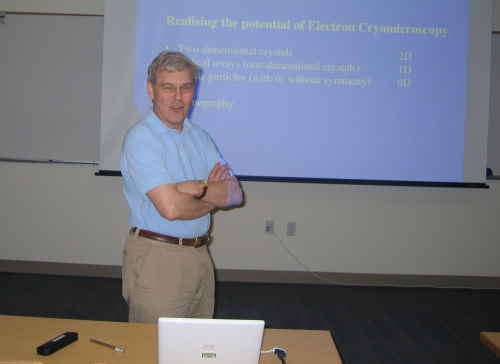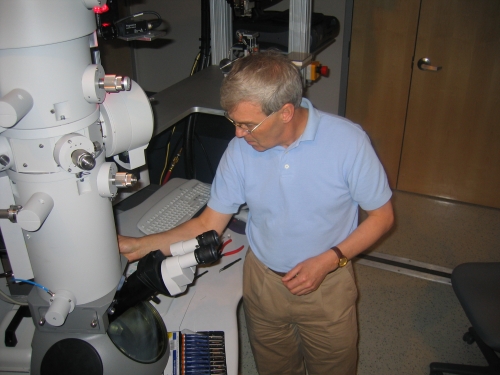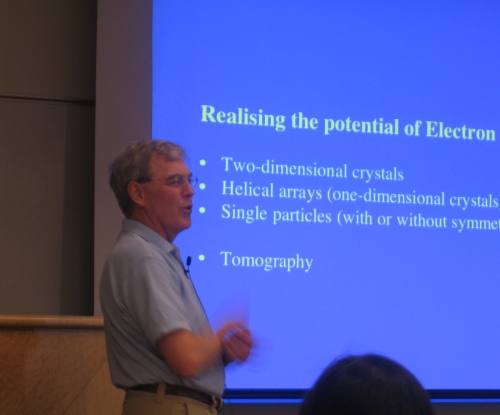April 20-22, 2004: Distinguished Lectureship Series 2004
National Resource for Automated Molecular Microscopy
Distinguished Lectureship Series 2004
Dr. Richard Henderson
Director
MRC Laboratory of Molecular Biology
Cambridge, U.K.
April 20-22, 2004
Lectures
| The pdf files of the lectures presented during the course are reproduced here with the kind permission of Professor Henderson. This material is provided for educational use only. The information in these slides including all data, images and related materials are the property of Professor Henderson. No part of this material may be reproduced without his explicit written permission. |
Tuesday Lecture, 20th April
Electron crystallography of 2D crystals
Electron crystallography has brought a rigorous crystallographic approach to the analysis of electron images and electron diffraction patterns from two-dimensional crystals. This has allowed the determination of a number of biological structures, many of them membrane proteins with a few at resolutions high enough to build good atomic models. I will outline our current best practice, discuss limitations and ask whether there are lessons from 2D crystals which can be transferred to cryoEM in general.
Wednesday Lecture, 21st April
Single particle electron microscopy
In this talk, I will outline our current approach to single particle electron microscopy which has involved using the SPIDER or IMAGIC software to initiate new projects and FREALIGN to extend the analysis. However, there are a number of unsolved problems which limit progress. I will discuss these in the context of particular examples.
Thursday Lecture, 22nd April
Realizing the potential of electron cryo-microscopy
Structural analysis by electron microscopy of biological macromolecules or macromolecular assemblies embedded in rapidly frozen, vitreous ice has made great advances during the last few years. CryoEM, can now be used to analyse the structures of molecules arranged in the form of two-dimensional crystals, helical arrays or as single particles with or without symmetry. Although it has been possible, using crystalline or helical specimens, to reach a resolution adequate to build atomic models (4 �ngstroms), there is every hope this will soon also be possible with single particles.
 |
 |
 |
DR. Richard Henderson: Selected Publications:
| Kunji, E.R.S., von Gronau, S., Oesterhelt, D. & Henderson, R.
Three-dimensional structure of halorhodopsin to 5� by electron crystallography. Proc. Nat. Acad. Sci. USA 97, 4637-4642. (2000). |
| Subramaniam, S. & Henderson, R.
Molecular mechanism of vectorial proton translocation by bacteriorhodopsin. Nature 406, 653-657. (2000). |
| Baker, T. S. & Henderson, R.
Electron Cryomicroscopy. International Tables for Crystallography, Volume F, chapter 19.6, 451-479. (2001). |

